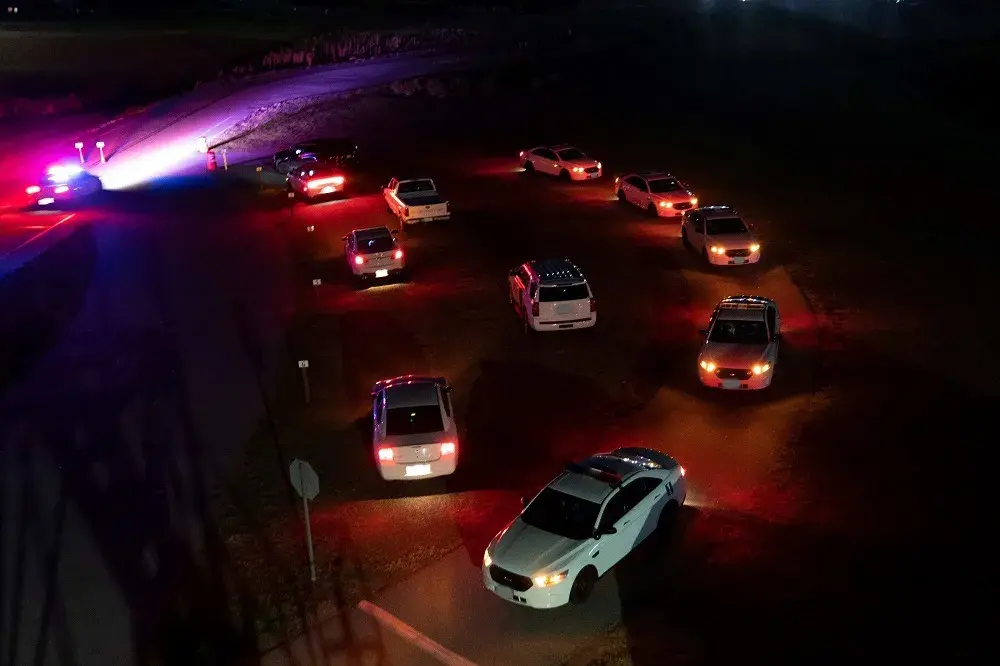Law enforcement officers face increasingly dangerous conditions on our roadways. With faster vehicles, more distractions behind the wheel and dynamic environments on the road, they face many risks when responding to emergency calls. Statistics from the National Law Enforcement Officer Memorial Fund show that law enforcement officers face a higher risk of death and injury traveling to the scene of an incident than at the actual scene itself. In fact, vehicle-related collisions are the one of the leading causes of death for law enforcement officers.
“Existing data clearly indicates that we need to do more to improve our safety and training efforts for new law enforcement officers,” explained Jim Grove, Department of Homeland Security (DHS) Science and Technology Directorate (S&T) Portfolio Manager to the Federal Law Enforcement Training Centers (FLETC). “There is a clear need for an improved curriculum that focuses on decision-making, hazard mitigation, tactical driving techniques and other skills that will help our new law enforcement officers navigate real world situations and respond to emergency scenarios in a safe and efficient manner.”
 In an effort to reduce law enforcement officer related crashes, DHS S&T’s National Urban Security Technology Laboratory (NUSTL) recently supported the FLETC Training Innovation Division’s (TID) efforts to validate a new Law Enforcement Operations Driving Skills (LEODS) training course in Glynco, Georgia.
In an effort to reduce law enforcement officer related crashes, DHS S&T’s National Urban Security Technology Laboratory (NUSTL) recently supported the FLETC Training Innovation Division’s (TID) efforts to validate a new Law Enforcement Operations Driving Skills (LEODS) training course in Glynco, Georgia.
“NUSTL is serving in a data collection and data analysis role to validate this new driving course,” explained Hasan Shahid, test engineer with NUSTL. “We attended all of the classes; recorded our observations on student and instructor performance; noted what concepts seemed easy to teach or learn and which ones seemed to be more difficult; reviewed reading materials, lesson plans and instructor training materials; and surveyed both students and instructors to get their thoughts on the course.”
Over the course of five weeks, NUSTL staff observed classes, rode along with students during driving courses, took notes from an observation tower during training exercises, and administered over 600 surveys to the 45 students who attended the LEODS course at FLETC. Through these surveys, and by observing the various classes and driving courses, NUSTL compiled data on what concepts and strategies worked, and which ones didn’t, along with data on what topics were easy to teach, and which ones weren’t.
All this information will be highlighted and summarized in a report that will be delivered to FLETC in the next few months.
“We hope that the information in this report will help FLETC to improve the LEODS course structure and lessons,” said Shahid. “Since this course is so new and many instructors are teaching this new curriculum for the first time, we think that this is a good opportunity to assess this course and provide our findings to FLETC.”
Staff members at FLETC welcomed the new course and the potential impact it can have for law enforcement officers.
“The LEODS course distinguishes itself from other existing curriculums in that it is designed to provide in-depth experiences and coursework that will expose new law enforcement officers to real-life scenarios and really teach them the various skills and strategies that will help them to be well-versed at law enforcement driving,” said Tommy Barron, Branch Chief of the Basic Driving Branch of FLETC.
Over the course of five weeks, participating law enforcement officers are familiarized with topics such as:
- basic drivers’ education;
- different techniques for parking, braking, steering and accelerating;
- when and how to utilize skid control and recovery techniques;
- using the technology and tools in and on their vehicles, especially lights and sirens;
- tactics for driving in non-emergency and emergency scenarios;
- how to drive safely and effectively at high speeds; and
- situational awareness.
 Training takes place both in the classroom and in simulators, then culminates with a week-and-a-half of applied training on FLETC’s expansive driving ranges, where students can utilize their skills in real-life scenarios and are subjected to tests that determine their readiness in the field.
Training takes place both in the classroom and in simulators, then culminates with a week-and-a-half of applied training on FLETC’s expansive driving ranges, where students can utilize their skills in real-life scenarios and are subjected to tests that determine their readiness in the field.
“The whole point of this training is to make sure that when law enforcement officers are out in the field, they already have hands-on experience and are prepared to handle any and all scenarios that they may encounter on a daily basis,” said Bill Story, lead instructor assigned to the Driver Marine Division at FLETC.
“Thanks to the unique training that I received here, I feel much more prepared to do my job,” explained Lauryn McCoy, police officer trainee from the Department of Defense. “Getting to experience how vehicles handle on the road in different conditions and at different speeds; practicing with lights and sirens; and driving on different ranges with variable traffic conditions and pedestrians – all these experiences made me feel like once I’m out in the real world, I’ll be ready to handle anything that I encounter.”
The recent five-week LEODS course is one of many that will take place at FLETC in the coming months. Once NUSTL’s assessment report is made available, FLETC staff will utilize its results to improve the course for future students.
To learn more about FLETC or the LEODS program, watch our video and then visit the FLETC website.
